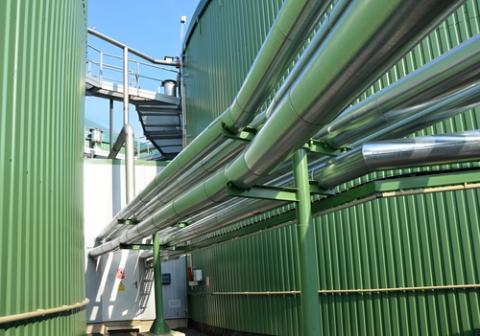Wednesday, 17/12/2025 | 01:30 GMT+7
In Dublin, Ohio, the Community Recreation Center decided to reduce its energy waste. Rather than rely on an electric utility to burn more coal or natural gas to provide electricity, as well as its own boilers to burn more fuel to provide heat, the facility decided to install a combined heat and power (CHP) unit.
The CHP or “cogeneration” project produces both electricity – allowing the Center to keep its lights on during power outages – and heat – keeping offices and swimming pools warm. The CHP unit is financed with private capital and will allow the Center to save roughly 10 percent on its energy bills.
“It’s pretty simple,” said Patrick Smith, a co-developer of the Dublin project. “It’s a generator, and we happen to capture the heat.”
Technology of the past…
Cogeneration is not a new concept or technology. In fact, Thomas Edison’s first power plants sold both heat and electricity to nearby buildings and factories. Yet to electrify America quickly in the early 20th century, policymakers and power companies created monopoly electric utilities that were protected from competition and guaranteed profits based on how much money they spent. As a result, for many decades, utilities favored larger and larger power plants that were placed far away from the buildings and factories that could have used their wasted heat.

America, of course, has long been electrified, but the model of monopoly-owned and electric-only power plants persists. And the waste is substantial. The typical power plant burns three units of fuel to generate just one unit of electricity. That 33 percent efficiency rate has not improved by a single percentage point since the late 1950s. Can you imagine if our cars wasted two-thirds of gasoline we put in them every time we filled up?
…Innovation for the future
The typical power plant burns three units of fuel to generate just one unit of electricity. That 33 percent efficiency rate has not improved by a single percentage point since the late 1950s.
CHP units, in contrast, achieve efficiencies of 60 to 90 percent. When designed and engineered appropriately for the facility in which they're installed, they also significantly reduce on-site emissions of carbon dioxide and other pollutants, such as nitrogen oxides (NOx) and sulfur oxides (SOx).
Fortunately, lawmakers and regulators are beginning to pay attention to CHP. The U.S. Environmental Protection Agency, for instance, identified efficient cogeneration as a means to meet the proposed Clean Power Plan, the nation’s first-ever limit on carbon dioxide pollution from existing power plants. That’s why the Ohio Environmental Council and Environmental Defense Fund recently asked the Public Utility Commission of Ohio to support Ohio Power Company and Kraton Polymers’ joint application to use a new CHP project to help the utility meet its energy efficiency goals.
Currently, CHP provides 12 percent of U.S. electricity, virtually the same as solar, wind, biomass, and hydropower combined, but, according to the Oak Ridge National Laboratory, CHP could supply as much as 20 percent of U.S. electric capacity by 2030. If CHP reaches this threshold, it would:
create nearly one million new, highly-skilled technical jobs across the country;
save the U.S. more than 5 quadrillion Btu (Quads) of fuel annually, the equivalent of nearly half the total energy used by U.S. households; and
reduce carbon dioxide emissions by more than 800 million metric tons per year, the equivalent of removing more than half of the passenger vehicles from the road.
The Dublin and other CHP projects demonstrate the need for a broader definition of efficiency. Rather than just focus on how residents and businesses can reduce their electricity use, perhaps by adding insulation or installing modern appliances, utilities and other power companies also need to look at new (and old) technologies, like CHP, to obtain substantial efficiency gains for their power plants.
Anh Tuan








 Enhancing capacity to develop and implement energy efficiency policies at local level
Enhancing capacity to develop and implement energy efficiency policies at local level
 Bosch Vietnam Plant Benefits from Investment in Energy Efficiency
Bosch Vietnam Plant Benefits from Investment in Energy Efficiency
 Webinar 2: “Financial Support for Energy Efficiency Enterprises – Opportunities and Challenges”
Webinar 2: “Financial Support for Energy Efficiency Enterprises – Opportunities and Challenges”
 Vietnamese enterprises achieve green growth and cut costs through energy efficiency
Vietnamese enterprises achieve green growth and cut costs through energy efficiency
 Capacity Building for Program Implementing Entity
Capacity Building for Program Implementing Entity
 Promoting Energy Efficiency for Technical Staff of Brick and Ceramic Sector
Promoting Energy Efficiency for Technical Staff of Brick and Ceramic Sector
 Enhance Energy Efficiency Knowledge for Managers of Cement Industrial Enterprises
Enhance Energy Efficiency Knowledge for Managers of Cement Industrial Enterprises